How have cellular SEPs fared in the opt-out sunrise period of the Unified Patent Court (UPC)?
The Unified Patent Court (UPC) opened for business on 1 June 2023 , ending the ‘sunrise period’ for opting-out patents and patent applications from the jurisdiction of the UPC from the very start. It is still possible to opt-out European applications and patents from the jurisdiction of the UPC system (at least for a transitional period of 7 years), but in the event an action has already been brought before the UPC in respect of a given European patent right then an opt-out will no longer be possible for this patent right.
We in the Pattern team at Bird & Bird spend our days crunching data, particularly in relation to patents and applications that have been declared to ETSI as being potentially essential to one of the 3GPP cellular telecommunications standards (which we refer to here as “cellular SEPs” for convenience). So, we decided to take a look at how cellular SEPs have fared in the opt-out sunrise period to determine what approach that cellular SEPs owners are planning to take with respect to the UPC.
At Pattern we have developed unique, in-house tools and software relating to cellular SEPs. Using our data, in conjunction with opt-out data downloaded from the UPC on the morning of Monday 22 May (the last day on which the UPC would let users download this type of data), we considered the position in relation to opt-outs in the sunrise period for cellular SEPs.
According to our Pattern data, there are just over 45,000 pending or granted European cellular SEPs, with around 25,000 of those (56%) being granted patents.
As of the morning of 22 May 2023, there had been just over 240,000 European patent rights for which opt-out applications had been filed. Almost 190,000 of those opt-outs relate to granted European patents, with the other 50,000 relating to pending applications.
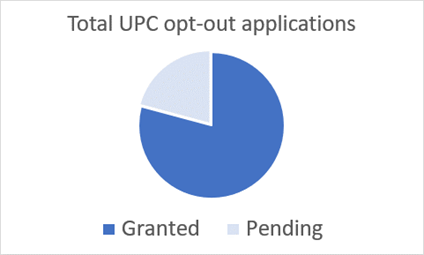
Of those approximately 240,000 opt-outs that have been filed, our data indicates that approximately 3% (6,653) relate to cellular SEPs. This number comprises 5,341 granted cellular SEPs (i.e. approximately 3% of all granted patents that have been opted-out are granted cellular SEPs).
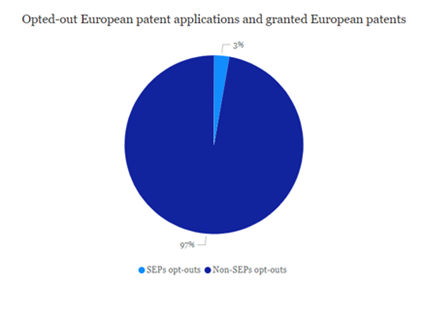
Hence, approximately 15% of all European cellular SEPs have already been opted-out of the jurisdiction of the UPC, with this proportion rising to approximately 21% when considering only granted European cellular SEPs.
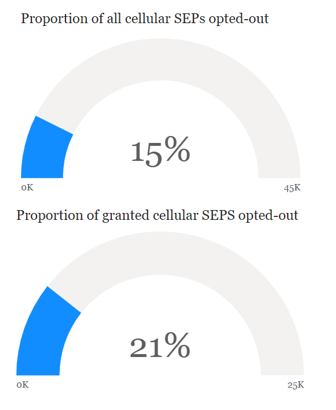
From our Pattern data, we calculate that cellular SEPs make up approximately 1% of all published European patent applications and granted European patents.
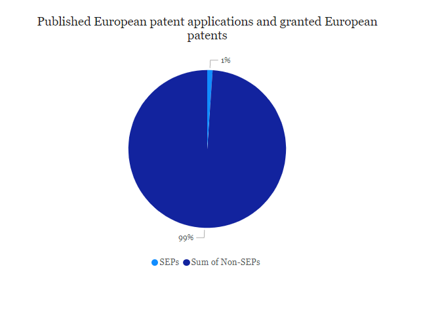
Comparatively therefore, it appears that European cellular SEPs owners are potentially between two and three times more likely to opt their European cellular SEPs out of the jurisdiction of the UPC than the average European patent right proprietor.
This seems to suggest European cellular SEPs owners overall have taken a more cautious approach to the UPC system.
This being said, the approach towards opting-out of the jurisdiction of the UPC appears to differ vastly across the owners of the largest European cellular SEP portfolios.
According to our Pattern data (and the opt-out applications filed up to 22 May 2023), the proportion of opt-out applications filed by entities having the top twenty largest European cellular SEP portfolios varies from anywhere between 0% and 96% of their entire European cellular SEPs portfolio.
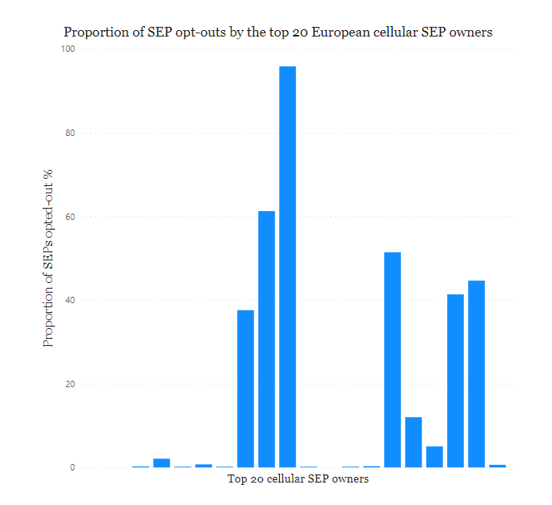
This is a vast range, which suggests that not all the largest European cellular SEPs owners are planning to take a common approach to the UPC, with some having decided not to allow their high value European cellular SEPs to be subject to the new court from the start and perhaps (at least some) others planning to rely quite heavily on the UPC going forward (though there may well have been a flurry of opt-out activity from these SEPs owners since the opt-out data was last made available) or leaving the decision until later.
Whilst we will not have the full picture on the approach that European cellular SEP owners are taking with respect to the UPC until the court settles in and finds its place within Europe’s intellectual property system, it seems a fair assessment based on the opt-outs for which data has been made available, that there is perhaps a higher than average level of caution currently toward the UPC from cellular SEPs owners, though this caution is seemingly not equally shared by all.
More on the UPC can be found on our website.
“it will no longer be possible to perform massive opt-outs via API as of 31 May, 9AM CET. The ongoing opt-outs will be stored and the processing of them will resume as of 1st of June at 9AM CET. Logging of “new” opt-outs will be possible again from 01 June, 9AM CET”.
https://www.unified-patent-court.org/en/news/practical-information-upcoming-launch-cms-entry-force-eif-1st-june
This article was produced using data analytics from Bird & Bird’s Intelligence Consulting Offering: Pattern




